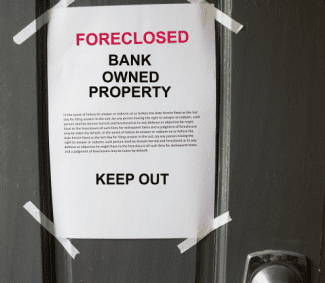
10 Home Landscaping Rules You Should Never Break
Homeowners’ use of the front or backyard can vary widely – and include everything from a patio spa or herb garden to a complete outdoor chef’s kitchen for entertaining. Despite the many options you have for making the most of your outdoor space, there are still a few cardinal rules for ensuring your landscaping is a success.
Here are 10 key rules that will help guide you to a flourishing, comfortable yard that suits your needs.
1. Consider the right plants for your climate. From grass to trees to the bushes lining your walkway, you have choices to make not just about the right aesthetic for your house, but also regarding what plants are best-suited for the part of the country you live in and how they’ll fare outside your home.
Kris Kiser, president and CEO of the Outdoor Power Equipment Institute, stresses the importance of “right plant, right place,” which means taking advantage of local plant species that will flourish where you live and in the right part of a yard, and don’t require too much water in a dry climate or grow too large and choke out other plant life. The type of grass you choose for your lawn based on where you live is just as important, as the wrong species will likely die or require more maintenance than it’s worth.
“There’s hundreds and hundreds of species of turf, so you don’t want to put a lush Kentucky bluegrass in Southern California where it’s water-challenged – you want a Bermuda or a buffalo grass,” Kiser says.
You may want a pool here, a fire pit farther back and a flower garden with seating off to the side, but you’re likely overextending your yard and your budget, explains Chip Wade, a master carpenter best known for his roles on HGTV shows like “Ellen’s Design Challenge” and “Curb Appeal: The Block,” and a consultant for Liberty Mutual Insurance.
“Keep the action close to the house, and focus more of your budget in one place,” he says. “It will make the overall final product more effective and higher quality.”
Additionally, too much pavement in your yard can cause runoff problems when it rains. Don’t install a backyard pool so large that you’ve removed all space for plants, which can help you avoid basement flooding issues.
3. Plan for the right professional help. Like with any do-it-yourself project, be aware of your limits and know what home improvements require a licensed professional to ensure the work is done properly. Expect to book work from a skilled contractor at least a few months in advance during spring and summer. Kris Holland, owner of Black River Landscape Management, based in Randolph, New Jersey, says that by early March, his company’s calendar is already full through part of May.
“If you can call somebody in March and they can say, ‘Hey, we can be there on your property tomorrow,’ then maybe you have to worry why they have the ability to do that,” Holland says.
4. Know your maintenance limits. As you select your outdoor living layout and natural adornments, be realistic about how much work you’ll be willing and able to put in on a regular basis.
If you’re not the kind of person who can maintain a garden of flowers that need to be planted annually, take a closer look at perennial plants that grow back year after year. Similarly, if you don’t see yourself cleaning an outdoor kitchen every week or skimming a pool regularly, reconsider those features as well.
5. Seed and aerate your lawn appropriately. Keeping a lawn alive is extremely difficult for many homeowners, and it’s important to be proactive about your lawn to keep it healthy year after year.
Most important, Holland says, is to seed and aerate the lawn at least once a year, preferably in the spring. “It opens up area and basically frees space in your lawn for your grass to get stronger,” he says.
If you tend to use your lawn a lot for entertainment or to play backyard sports, Holland recommends repeating the process in the fall.
Wade adds that regular tasks are also key to keeping the lawn looking healthy: “Fertilizing along with establishing a good watering routine and keeping your mower blades sharp is the best recipe for a beautiful lawn you feel confident about.”
6. Know what local ordinances allow and require. As you plan for a patio, pool or outdoor kitchen, read up on local ordinancesand any restrictions established by your homeowners association (if you’re part of one) to ensure you stay within the limits for development and know what projects may need a permit.
“Depending on your state, depending on your township or county, there’s certain restrictions on the amount of area you’re allowed to cover,” Holland says. You may only be allowed to cover 30 to 40 percent of your property with pavement, a deck or other structure, meaning the majority of your plot – house footprint included – has to be free ground to absorb rainwater.
“We’ve had to do emergency repairs where people tried to save a couple bucks,” he says. “And then we show up and there’s a puddle of water in the basement because their entire basement is pitched towards their home.”
8. Keep shade in mind as you plan. As you select the location for plants and structures in your landscaping plan, keep an eye on the path that the sun shines through your yard. If you place a bush that requires little sunlight in a spot that gets rays all day, it likely won’t last long.
“You could waste your money so quickly, have [all your plants] die on you, easily,” Holland says.
9. Contact your homeowners insurance provider. For any scenarios where you’ve built an outdoor kitchen, installed a pool or added a backyard shed, you’ll want to contact your insurance provider. “If you’ve added a section to your home that increases its value, be sure to ask you rep if you might need more insurance coverage to protect your investment,” Wade says.
While additional value for your home may mean an increase in the premium, the alternative is the new addition not being covered in the event of damage to your home. Or worse, an unannounced addition may even put the rest of your home’s coverage in jeopardy if you need to make a claim.
10. Don’t restrict yourself to an existing layout. Knocking down walls inside your house can be an expensive and time-consuming process, but doing the outdoor equivalent doesn’t have to be. Kiser stresses that if you make a design flub and a bush dies where you planted it, or you simply don’t like how it looks, you can change the entire look of your backyard.
“The nice thing about a living landscape – you can grow another one. You can move this and move that,” he says.
You can still follow the basic rules for landscaping your yard and have plenty of room to experiment with color, structure and the overall look until you find something that flourishes and that you can enjoy.















 Accessibility
Accessibility